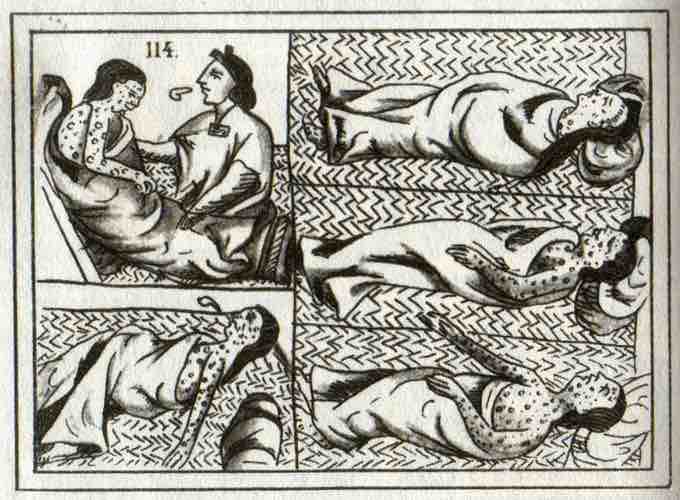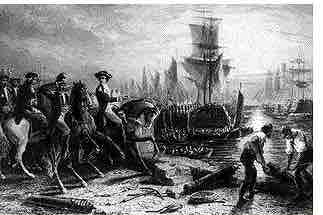The Smallpox Epidemic
The North American smallpox epidemic of 1775–1782, when the fatal infectious disease spread across the continent, coincided with the American Revolutionary War. It is not known how or where the outbreak began, but by 1775, it was raging through British-occupied Boston. During Washington's siege of the city, the disease broke out among both Continental and British camps. At the same time, smallpox was also rampant in the Continental Armies that had invaded Canada.

16th-century smallpox
This 16th-century Aztec drawing depicts smallpox victims. A new epidemic of smallpox would ravage North America during the Revolutionary War.
The epidemic was not limited to the colonies on the Eastern seaboard, nor to the areas affected by hostilities. The outbreak spread deep into the South; many escaped slaves who had fled to the British lines in the South contracted the virus and died. From 1778 to 1779, New Orleans was hit especially hard due to its densely populated urban areas. By 1779, the disease had spread to Mexico, where it would cause the deaths of tens of thousands.
The epidemic then spread through the Great Plains, likely due to the travels of the Shoshone Indian tribes. By 1780, it had reached the Pueblos of the territory comprising present-day New Mexico. It also showed up in the interior trading posts of the Hudson's Bay Company in 1782. It is estimated to have killed nearly 11,000 Native Americans in the western lands of present-day Washington, reducing the population from 37,000 to 26,000 in just seven years.
By its end, the smallpox epidemic had reached as far west as the Pacific Coast and as far north as Alaska, infecting virtually every part of the vast continent of North America. Though no certain statistics exist, it is estimated to have killed more than 145,000 people.

Evacuating Boston
In 1775, American militias surrounded Boston, forcing British troops to evacuate the city. British troops evacuated in 1776 (depicted here) in part because of smallpox outbreaks within the city.